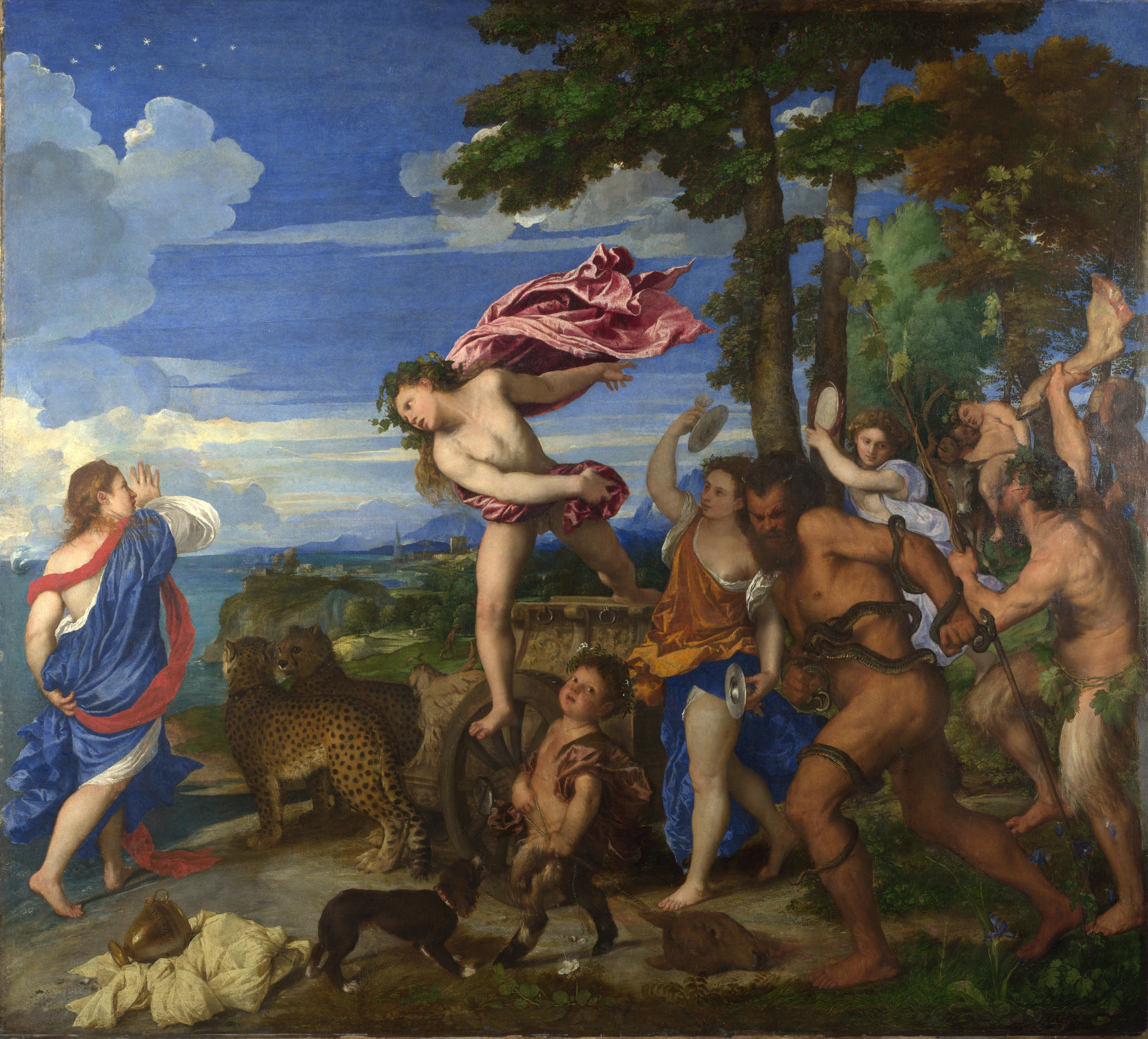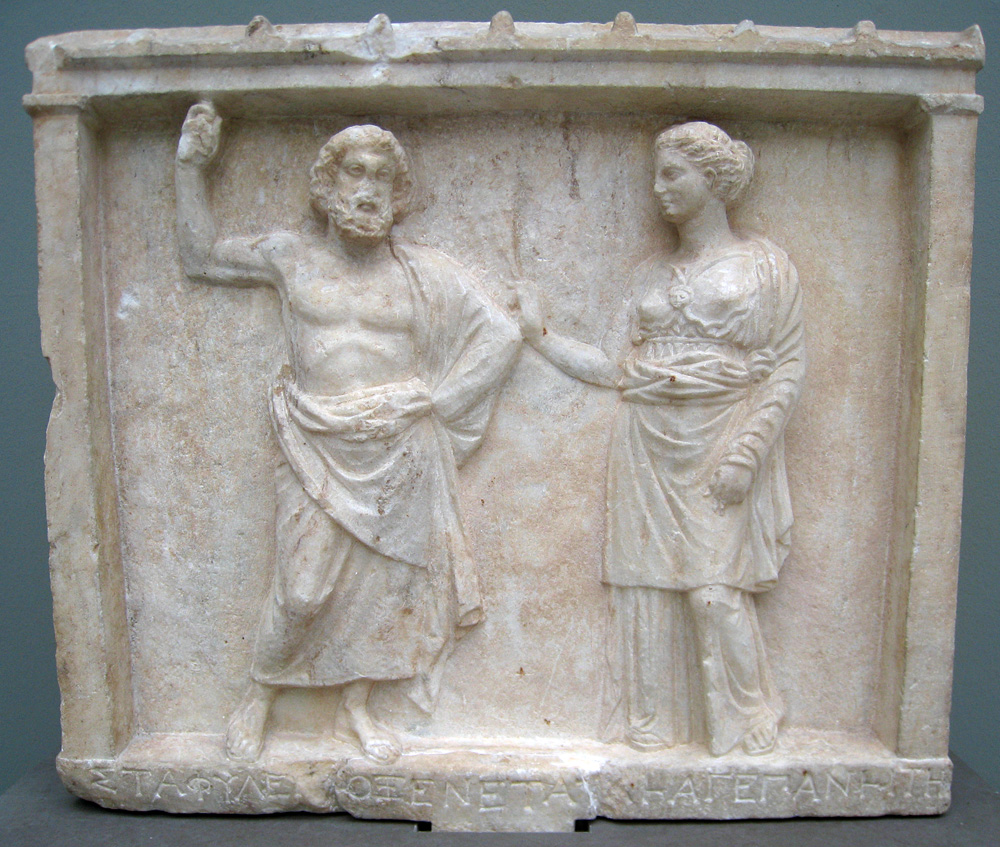|
Evanthes
In Greek mythology, Evanthes or Euanthes (Ancient Greek: Εὐανθής means "the richly blooming") may refer to two different individuals: * Evanthes, brother of Oenopion, Eustathius on Homer, ''Odyssey'' 1623.44 as cited in Hesiod, '' Ehoiai'' fr. 86 son of Ariadne and Dionysus. His mother was probably the nymph Helice and his only sister was Merope (Aero) who was raped by the giant Orion. Together with his brothers, Talus, Melas, Salagus and Athamas, they followed their father when he sailed from Crete to settle in Chios. Pausanias7.4.8/ref> Other sources makes Euanthes a son of Dionysus and Ariadne and brother to Oenopion, Thoas, Staphylus, Latromis and Tauropolis. He was also said to be one the generals of Rhadamanthys who was presented by the later with the city of Maroneia. Euanthes had a son Maron who was encountered by Odysseus in Ismarus, land of the Ciconians. * Evanthes, a Phrygian who fought on Aeneas' side in Italy. He was killed by Mezentius, king of the ... [...More Info...] [...Related Items...] OR: [Wikipedia] [Google] [Baidu] |
Maron (mythology)
In Greek mythology, Maron () or Maro (; Ancient Greek: Μάρων, ''gen.'' Μάρωνος) was the hero of sweet wine. He was an experienced man in the cultivation of the vine. Family Maron was the son of Evanthes, EuanthesEustathius of Thessalonica, Eustathius on Homer, ''Odyssey'' 1623.44 as cited in Hesiod, ''Catalogue of Women, Ehoiai'' fr. 86; Philostratus of Lemnos, Philostratus the Athenian, ''Heroicus'' 680 (some also call him a son of Oenopion, Silenus, and a pupil of Silenus), and grandson of Dionysus and Ariadne. As the grandson of Dionysus, Bacchus and the Crete, Cretan princess, Maron was nephew to Thoas (king of Lemnos), Thoas, Staphylus (son of Dionysus), Staphylos and Eunous. Mythology Maron was mentioned among the companions of Dionysus. The city Maroneia in Thrace was named after its founder Maron; there he was venerated in a sanctuary. The god Osiris (Dionysus) left Maron, who was now old, in that land to supervise the culture of the plants which he introduc ... [...More Info...] [...Related Items...] OR: [Wikipedia] [Google] [Baidu] |
Ariadne
In Greek mythology, Ariadne (; ; ) was a Cretan princess, the daughter of King Minos of Crete. There are variations of Ariadne's myth, but she is known for helping Theseus escape from the Minotaur and being abandoned by him on the island of Naxos. There, Dionysus saw Ariadne sleeping, fell in love with her, and later married her. Many versions of the myth recount Dionysus throwing Ariadne's jeweled crown into the sky to create a constellation, the Corona Borealis. Ariadne is associated with mazes and labyrinths because of her involvement in the myths of Theseus and the Minotaur. There are also festivals held in Cyprus and Naxos in Ariadne's honor. Etymology Greek lexicographers in the Hellenistic period claimed that ''Ariadne'' is derived from the ancient Cretan dialectical elements ''ari'' (ἀρι-) "most" (which is an intensive prefix) and ''adnós'' (ἀδνός) "holy". Conversely, Stylianos Alexiou has argued that despite the belief being that Ariadne's name is of ... [...More Info...] [...Related Items...] OR: [Wikipedia] [Google] [Baidu] |
Salagus
In Greek mythology, Salagus (Ancient Greek: Σάλαγόν) was the Cretan son of Oenopion, son of Ariadne. His mother was probably the nymph Helice and his sister was Merope (Aero) who was raped by the giant hunter Orion. Parthenius20/ref> Together with his brothers Euanthes, Melas, Talus and Athamas, they followed their father when he sailed with a fleet from Crete to Chios Chios (; , traditionally known as Scio in English) is the fifth largest Greece, Greek list of islands of Greece, island, situated in the northern Aegean Sea, and the List of islands in the Mediterranean#By area, tenth largest island in the Medi .... Pausanias7.4.8/ref> Note References * Parthenius, ''Love Romances'' translated by Sir Stephen Gaselee (1882-1943), S. Loeb Classical Library Volume 69. Cambridge, MA. Harvard University Press. 1916.Online version at the Topos Text Project.*Parthenius, ''Erotici Scriptores Graeci, Vol. 1''. Rudolf Hercher. in aedibus B. G. Teubneri. Leipzig. 1858Gr ... [...More Info...] [...Related Items...] OR: [Wikipedia] [Google] [Baidu] |
Helice (mythology)
In Greek mythology, Helice ( (modern ; Ancient Greek: ''Helike'') means "willow") was a name shared by several women: * Helice, nurse of the god Zeus during his infancy on Crete together with her sister Aex.Hyginus, ''De astronomia'2.13.5/ref> Her name suggests that she was a "willow-nymph", just as there were oak-tree nymphs and ash-nymphs (Dryads and Meliae). It is likely that she is the same as Ide. When Cronus once came to Crete in search of Zeus, the young god hid himself and his nurses by turning them into bears, as he became a serpent. Later, when he became king, he made them both constellations, Helice becoming Ursa Major, while Cynosura became Ursa Minor. Helice, in antiquity, was a common proper name for the constellation Ursa Major. In one version, Demeter asks the stars whether they know anything about her daughter Persephone's abduction, and Helice tells her to ask Helios, who knows the deeds of the day, because the night is blameless and knows nothing. Another a ... [...More Info...] [...Related Items...] OR: [Wikipedia] [Google] [Baidu] |
Oenopion
In Greek mythology, Oenopion (Ancient Greek language, Ancient Greek: , ''Oinopíōn'', English language, English translation: "wine drinker", "wine-rich" or "wine face") was a legendary king of Chios, and was said to have brought winemaking to the island, which was assigned to him by Rhadamanthys. Family Oenopion was the son of the Crete, Cretan princess Ariadne by Dionysus. He was born on Lemnos. His brothers were Thoas (king of Lemnos), Thoas, Staphylus (son of Dionysus), Staphylus, Latromis, Evanthes, Euanthes, and Tauropolis. By Queen Helike (mythology)#Queen, Helike, Oenopion had one daughter, called either Merope (Oenopion), Merópē, or Aero (mythology), Aërō by Parthenius of Nicaea, Parthenius.Parthenius of Nicaea, Parthenius20/ref> He also had several sons, namely Melas (mythology), Melas, Talos (mythology), Talus, Maron (mythology), Maron, Euanthes, Salagus and Athamas (mythology), Athamas, who all sailed with him to Chios from Crete. Mythology The most well known ... [...More Info...] [...Related Items...] OR: [Wikipedia] [Google] [Baidu] |
Melas (mythology)
In Greek mythology, the name Melas () refers to a number of characters. *Melas, son of Poseidon and an unnamed nymph of Chios, brother of Agelus. Pausanias7.4.8/ref> He may or may not be identical to Melas, son of Poseidon, who was said to have given his name to the river Melas in Egypt, which was later renamed Nile. *Melas, a Calydonian prince as one of the sons of King Porthaon and Euryte, and thus, brother of Oeneus, Agrius, Alcathous, Leucopeus and Sterope. He was the father of Pheneus, Euryalus, Hyperlaus, Antiochus, Eumedes, Sternops, Xanthippus and Sthenelaus, who were all slain by Tydeus for plotting against their uncle Oeneus. *Melas, a son of Phrixus and Chalciope. By Eurycleia, daughter of Athamas and Themisto, he became the father of Hyperes. *Melas, son of Licymnius. He and his brother Argius accompanied Heracles in his campaign against Eurytus, and both fell in the battle. *Melas, son of Oenopion and possibly the nymph Helice. He was the brother of Ta ... [...More Info...] [...Related Items...] OR: [Wikipedia] [Google] [Baidu] |
Talos (mythology)
In Greek mythology, Talos or Talus ( /ˈteɪlɒs/; Ancient Greek: Τάλως ''Talōs'') may refer to the following characters mostly connected with Crete: * Talos, a man of bronze who guarded Crete. * Talos, a son of Cres (son of Idaea and Zeus) and the father of Hephaestus who also fathered Rhadamanthys. This Talos is considered by some scholars to be the same as the Talos who guarded Crete. *Talus, a son of Oenopion, son of Ariadne. His possible mother was the nymph Helice and his only sister was Merope (Aero). Parthenius20/ref> Together with his brothers Euanthes, Melas, Salagus and Athamas, they followed their father when he sailed with a fleet from Crete to Chios. This Talos is considered by some scholars to be the same as the Talos who guarded Crete. * Talos, son of Daedalus' sister Perdix. Daedalus seeing that his disciple Talos was more gifted than himself, killed him. * Talos, a soldier in the army of Turnus, the man who opposed Aeneas in Italy. He was killed by Aenea ... [...More Info...] [...Related Items...] OR: [Wikipedia] [Google] [Baidu] |
Staphylus (son Of Dionysus)
In Greek mythology, Staphylus (; Ancient Greek: Στάφυλος, 'grape cluster') was the son of wine-god Dionysus and Ariadne. His brothers include Oenopion, Thoas, Peparethus, Euanthes and Phanus. Another source stated that Staphylus's brothers were Maron, Thoas, and Eunous. Mythology Staphylus and his brother Phanus are counted among the Argonauts. As one of Rhadamanthys' generals, he was the founder of the colony of Peparethos on the island of Skopelos, in the Northern Sporades island chain. Staphylus dwelt in Naxos and was married to Chrysothemis, by whom he had three daughters: Rhoeo, who was a lover to Apollo, Parthenos, and Molpadia or Hemithea.Diodorus Siculus5.62.3/ref> The latter became the mother of Basileus with Lyrcus after Lyrcus had made a journey to the oracle at Didyma. Staphylus is said to have enticed Lyrcus into too much drinking of wine and then, when Lyrcus' senses were dulled by drunkenness, united him with Hemithea. Parthenius1with sources— '' ... [...More Info...] [...Related Items...] OR: [Wikipedia] [Google] [Baidu] |
Thoas (king Of Lemnos)
In Greek mythology, Thoas (Ancient Greek: Θόας, "fleet, swift") was a son of the god Dionysus and Ariadne, the daughter of the Cretan king Minos. He was the king of Lemnos when the Lemnian women decided to kill all the men on the island. He was the only man to survive the massacre, having been saved by his daughter Hypsipyle. He is sometimes identified with the Thoas who was the king of the Taurians when Iphigenia was taken to the land of the Taurians and became a priestess of Artemis there. Family Thoas was the son of Dionysus and Ariadne. According to the mythographer Apollodorus, after the god Dionysus fell in love with Ariadne he carried her to Lemnos where they produced four sons Thoas, Staphylus, Oenopion, and Peparethus. However, according to Plutarch, by some accounts Oenopion and Staphylus were instead the sons of Theseus and Ariadne. Thoas was the father of Hypsipyle, and according to the ''Iliad'', by her and Jason, the grandfather of Euneus. Other sources ... [...More Info...] [...Related Items...] OR: [Wikipedia] [Google] [Baidu] |
Scholia
Scholia (: scholium or scholion, from , "comment", "interpretation") are grammatical, critical, or explanatory comments – original or copied from prior commentaries – which are inserted in the margin of the manuscript of ancient authors, as glosses. One who writes scholia is a scholiast. The earliest attested use of the word dates to the 1st century BC. History Ancient scholia are important sources of information about many aspects of the ancient world, especially ancient literary history. The earliest scholia, usually anonymous, date to the 5th or 4th century BC (such as the ''scholia minora'' to the ''Iliad''). The practice of compiling scholia continued to late Byzantine times, outstanding examples being Archbishop Eustathius' massive commentaries to Homer in the 12th century and the ''scholia recentiora'' of Thomas Magister, Demetrius Triclinius and Manuel Moschopoulos in the 14th. Scholia were altered by successive copyists and owners of the manusc ... [...More Info...] [...Related Items...] OR: [Wikipedia] [Google] [Baidu] |


